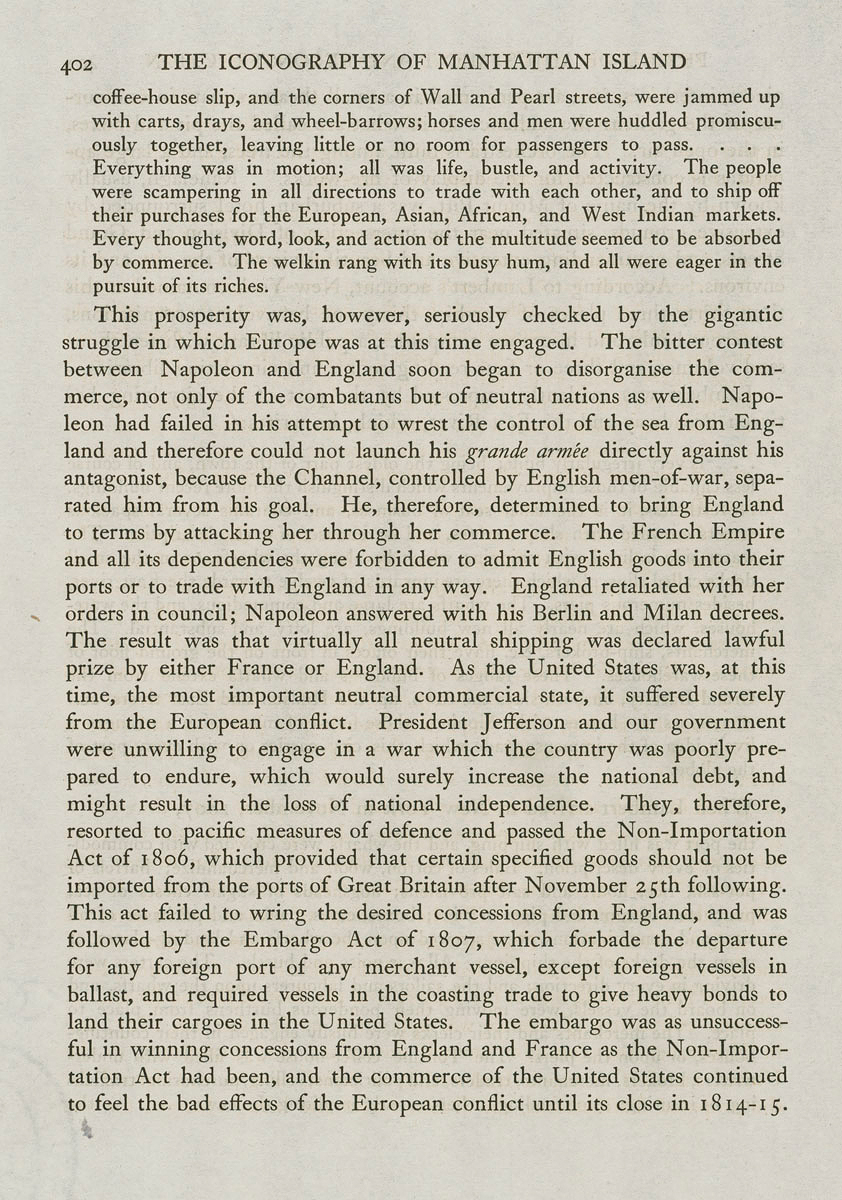402 THE ICONOGRAPHY OF MANHATTAN ISLAND
coffee-house slip, and the corners of Wall and Pearl streets, were jammed up
with carts, drays, and wheel-barrows; horses and men were huddled promiscu¬
ously together, leaving little or no room for passengers to pass.
Everything was in motion; all was life, bustle, and activity. The people
were scampering in all directions to trade with each other, and to ship off"
their purchases for the European, Asian, African, and West Indian markets.
Every thought, word, look, and action of the multitude seemed to be absorbed
by commerce. The welkin rang with its busy hum, and all were eager in the
pursuit of its riches.
This prosperity was, however, seriously checked by the gigantic
struggle in which Europe was at this time engaged. The bitter contest
between Napoleon and England soon began to disorganise the com¬
merce, not only of the combatants but of neutral nations as well. Napo¬
leon had failed in his attempt to wrest the control of the sea from Eng¬
land and therefore could not launch his grande armee directly against his
antagonist, because the Channel, controlled by English men-of-war, sepa¬
rated him from his goal. He, therefore, determined to bring England
to terms by attacking her through her commerce. The French Empire
and all its dependencies were forbidden to admit English goods into their
ports or to trade with England in any way. England retaliated with her
orders in council; Napoleon answered with his Berlin and Milan decrees.
The result was that virtually all neutral shipping was declared lawful
prize by either France or England. As the United States was, at this
time, the most important neutral commercial state, it suffered severely
from the European conflict. President Jefferson and our government
were unwilling to engage in a war which the country was poorly pre¬
pared to endure, which would surely increase the national debt, and
might result in the loss of national independence. They, therefore,
resorted to pacific measures of defence and passed the Non-Importation
Act of 1806, which provided that certain specified goods should not be
imported from the ports of Great Britain after November 25th following.
This act failed to wring the desired concessions from England, and was
followed by the Embargo Act of 1807, which forbade the departure
for any foreign port of any merchant vessel, except foreign vessels in
ballast, and required vessels in the coasting trade to give heavy bonds to
land their cargoes in the United States. The embargo was as unsuccess¬
ful in winning concessions from England and France as the Non-Impor¬
tation Act had been, and the commerce of the United States continued
to feel the bad effects ofthe European conflict until its close in 1814-15.
\
|








